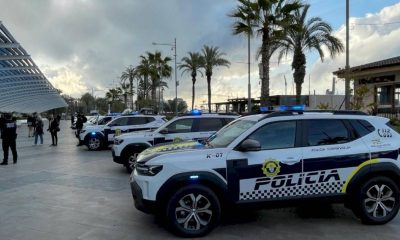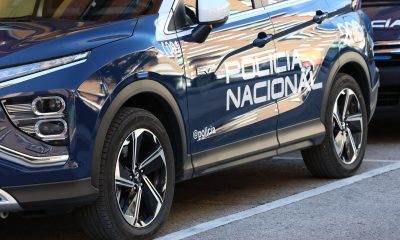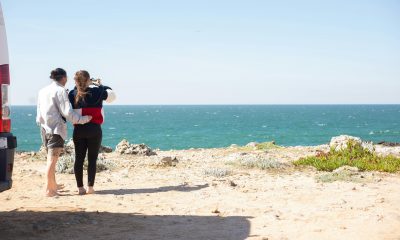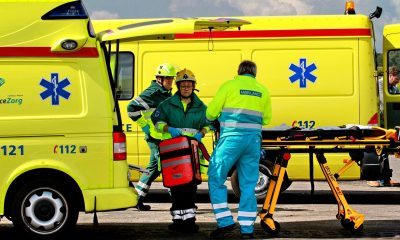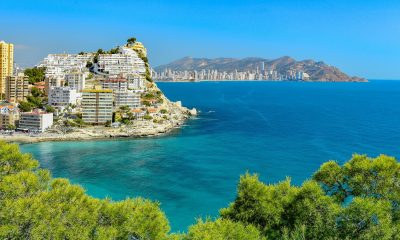Costa Blanca
Orihuela woman dies because ambulance took too long to arrive
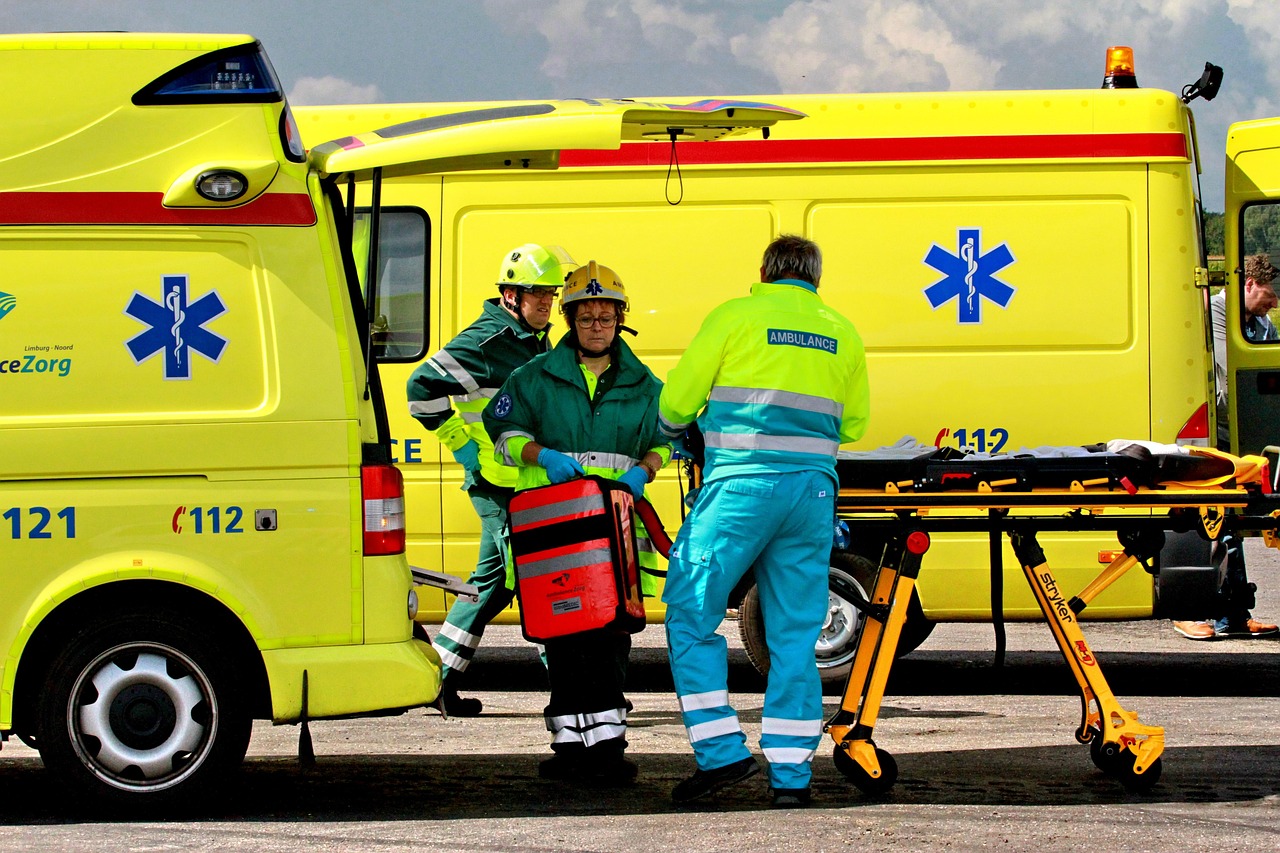
On Monday, 24th March, a 24-year-old lady passed away at her residence in Rincón de Bonanza’s Orihuela sector. According to her family, the National Police arrived earlier than the SAMU (National Emergency Medical Services), which took forty minutes to arrive.
Her uncle, Juan Ramón, says about the stressful and, most importantly, excruciating periods they went through while making a valiant attempt to escape the suffering and remember the terrible events that occurred only two days later. NAV was prescribed a pain reliever after visiting the emergency room of Vega Baja Hospital that morning for sciatica and everything going smoothly. The young lady had never experienced any health issues before. At approximately 1 p.m., his niece passed out and fell to the ground. She was talking and conscious. She informed him that her grandmother and partner were there. She lives next door, so it just took him a few seconds to get there.
After that, she experienced cardiac arrest. While the ambulance awaited its arrival, her uncle and partner both administered cardiopulmonary resuscitation. “We both knew how; I learnt in the military, and he had worked in an ambulance,” Juan Ramón adds. He claims that they attempted to resuscitate her for almost thirty minutes before National Police officers showed up there and removed them due to their weariness. “Our whole bodies hurt,” he remembers saying.
As Juan Ramón watched his niece “was losing consciousness, she was fading little by little, her pulse was losing its hold until she was left with her eyes open and glassy, in the void, with her face white and her lips purple,” he laments that the health services had asked her on the phone up to three times if she had her health card on hand.
He maintains that the ambulance “should have taken 10 minutes at most,” given that it is located on the road that links Vega Baja Hospital and the urban area. But for some reason, it took more than forty.
He states in a weak voice that this is the reason she wants to make the world aware of “what’s happening, not just for my niece, for whom nothing can be done,” but “because until it affects you, you’re not aware, but it can happen to anyone.”
She called 112 at 1:07 p.m., according to her story and the call record on her mobile phone, and gave them all the information they asked for—with the exception of her health card, which she was missing at the moment.
Three minutes after that, his niece passes out. When he gets a call at 1:12 p.m. asking for the SIP once more, Juan Ramón responds that his niece has gone into cardiac arrest and reiterates that he doesn’t have that information. He also insists that they are performing cardiopulmonary resuscitation on her and asks that they move quickly because she is in cardiac arrest.
He gets another call at 1:20 p.m. confirming that they are unable to locate his niece’s details. Once more, Juan Ramón introduces them to his niece. It seems that their last name was incorrect. They affirm that they have located her a few seconds later. She is in cardiac arrest, Juan Ramón confirms. They take him to a doctor, who enquires about his niece’s health. The doctor is surprised that they are able to do cardiopulmonary resuscitation (CPR) when he responds that they are.
A number of National Police patrols came about 1:25 p.m. Because they had been warned that the victim was conscious, the officers did not have a defibrillator, therefore they relieved Juan Ramón and NAV’s partner to continue CPR. Because they were within a short distance from the police station when they received the warning, one of the policemen objected.
An ambulance came at approximately 1:45 p.m. and took over for at least another 45 minutes, utilising all available resources, after another 15 minutes of taking turns giving CPR. However, the death was confirmed around 2:00 p.m. without any success.
The first contact, which was received at 1:03 p.m., described a woman who had fallen, was experiencing dizziness and breathing difficulties, according to the Emergency Information and Coordination Centre (CICU). At 1:05 p.m., an ambulance from the Basic Life Service was sent out.
The call was categorised as priority 1 at 1:09 p.m. when the caller dialled 112 once more, stating that they were performing basic cardiopulmonary resuscitation. While they were familiar with the approach, the CICU offered to help guide the resuscitation manoeuvres while they mobilised a SAMU unit.
According to CICU sources, the Medical Service for the Uninfected Mumps (SAMU) was already providing assistance at 1:24 p.m. Advanced cardiac resuscitation and other recovery measures were administered by the medical team, but no reaction was observed.
One ambulance
The notice was also given to the local health centre’s doctor. At the same moment as the SAMU (National Health Service), he and a nurse came in their vehicle. “The Orihuela Health Department is fully booked every day because there is only one SAMU (National Health Service), one less than the number of staff it has been assigned for the past three years,” says the medical expert, who has spent 23 years working in the local health centres.
In 2022, the Valencian Community’s urgent and non-urgent land medical transport service specifications established four medicalised units in the region, two in each of the two health areas (Orihuela and Torrevieja). However, the specifications failed to consider that the one on the Orihuela coast, which is located in Torrevieja due to its proximity, actually has three.
This “error” means that in reality, a department with a protected population of 180,000 people—including Orihuela (without the Coast), Albatera, Algorfa, Almoradí, Benejúzar, Benferri, Bigastro, Callosa de Segura, Catral, Cox, Daya Nueva, Daya Vieja, Dolores, Granja de Rocamora, Jacarilla, Rafal, Redován, and San Isidro—has only one medicalised ambulance.
In July of last year, the Vega Baja Hospital’s UGT union branch notified management of the situation and asked that “this service, which we so desperately need, be restored as soon as possible.” As of yet, there has been no settlement.
Discover more from Costa Blanca Daily
Subscribe to get the latest posts sent to your email.
Costa Blanca
Torrevieja’s new Local Police fleet

Eduardo Dolón, the mayor of Torrevieja, Federico Alarcón, the councillor for security and emergencies, and Alejandro Morer, the director general of police, presented the 17 new cars that will be used by the Local Police on Paseo Vista Alegre yesterday morning, Wednesday 2nd March. The vehicles will be leased for four years with a purchase option.
A total of 1,147,660.80 euros (286,915.20 euros for each contract year) is allocated for the purchase of these cars.
The 17 vehicles that are leased are:
- Ten SUV patrol cars, all hybrids (four equipped with police gear and an arrest kit, and six equipped with police gear but no arrest kit).
- Two vans: one with nine seats for police equipment and one for police and report preparations.
- A police-equipped all-terrain pickup truck for the Environmental Group.
- Four local police general service support cars without police gear (they should only have rotating magnetic LED lights with an integrated siren and, in three of them, police shields on the front and rear hoods and doors).
In addition, the successful bidder, Transtel, has offered to deliver to Torrevieja City Council two portable vehicle battery jump starters, each worth €200, two fixed/portable vehicle jump starters/chargers, each worth €600, and a high-quality workshop tool trolley with at least 170 parts, valued at €300.
Eduardo Dolón, the mayor of Torrevieja, has emphasised the financial investments made by the city council of Torrevieja in recent years to enhance the number of police officers and the fleet of vehicles of the Local Police, which has increased significantly in the last two years.
Eduardo Dolón said that the government team hopes to increase the number of officers in the Torrevieja Local Police force to 200 by the end of the current term in 2027. This is a significant number in order to provide all the necessary citizen security services that the thousands of tourists who visit Torrevieja each year and the residents of Torrevieja themselves deserve.
Discover more from Costa Blanca Daily
Subscribe to get the latest posts sent to your email.
Costa Blanca
Man arrested in Torrevieja for the death of a 5-year-old jailed
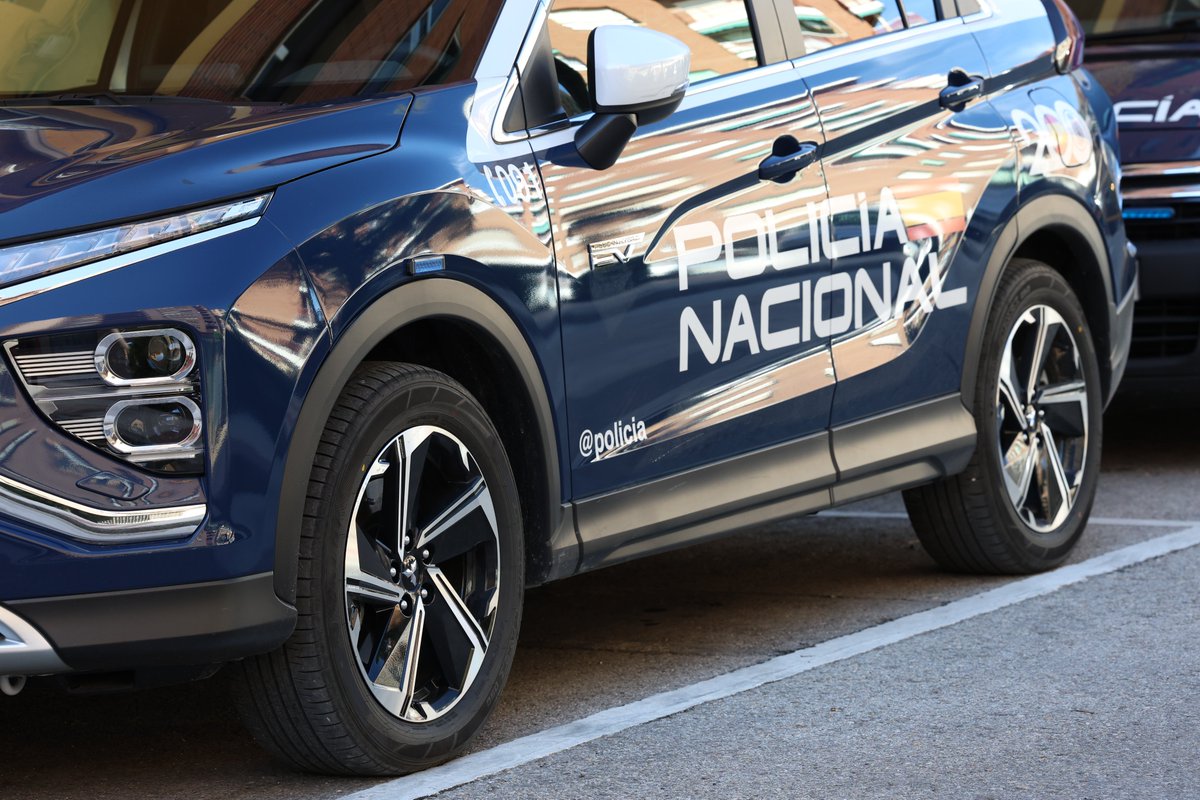
Following his appearance today, Thursday 3rd April, before the judge of the Court of Violence against Women number 2 of Murcia, Jesús J. “Suso,” 48, who was arrested in Torrevieja as the suspected perpetrator of the death of his five-year-old stepdaughter in the Murcian district of Llano de Brujas, will be held in provisional custody without bail.
Additionally, judicial sources state that the adoptive mother has also been questioned as a victim-witness, always accompanied by the victim support unit psychologist. A number of witnesses have also been questioned, including the detainee’s brother and parents.
Along with initiating the required support and social protection measures by directing her to the appropriate authorities, the court has also issued a protection order against the victim, which forbids the accused from contacting or approaching her as a precaution. Although the inmate had no prior allegations of gender-based assault, the court found him guilty in 2010 and 2014 of making threats in connection with domestic abuse, for which he was imprisoned for two years initially and then for an additional year.
The accused was taken to court facilities at 9:40 am following his arrest in Torrevieja on Tuesday, 1st April. Under the watchful observation of National Police officers, some of the girl’s family gathered at the entrance to the City of Justice in Murcia to demand justice for Nadia.
The incident, which has stunned society, happened last Tuesday when Jesús J.G. called the minor’s adoptive mother, Ramona, and said, “The girl is already in heaven.” The accused’s parents later discovered the youngster dead at the family home in the Llano de Brujas district, allegedly as a result of the minor consuming pills or other narcotics.
Given that retaliation against his former spouse may have been the driving force behind the crime, preliminary investigations suggest that vicarious violence may have occurred. Although there were records of threats in texts sent to the victim’s mother, there were no prior reports of abuse.
Discover more from Costa Blanca Daily
Subscribe to get the latest posts sent to your email.
Costa Blanca
Alicante’s Urbanova Beach, finally campervan free

Over the past week, Urbanova Beach’s scenery has undergone significant transformation. The caravans have vanished from the parking area close to Urbanova Beach after months of homeowners’ concerns about overpopulation. Through a campaign and recent surveillance, the local police have intervened and accomplished what the inhabitants have long sought: the removal of large trucks from the area that, in certain cases, had been there for months.
Up until now, enforcement of municipal ordinances that forbid parking cars wider than five meters in specific locations has been slack. The Local Police have started an “on-site campaign” this week to alert camper van and motorhome owners about the new rules, according to municipal sources. Warnings of potential fines for repeat offences have been sent, even though no consequences have been applied as of yet. To stop a recurrence of the crime, two neighbourhood police officers assigned to the area will also continue to monitor the parking lot.
After months of grievances, the people of Urbanova are relieved by this intervention. The president of the Urbanova citizens’ organisation, María José Molina, emphasises the obvious changes in the neighbourhood. They have eliminated them, or at least there are fewer of them, and it appears like things are progressing. They’ve been informed by the local police, and it’s evident that they’ve acted,” Molina adds.
In addition to reducing beachgoers’ parking options, the overpopulation of these cars in Urbanova caused issues for the neighbourhood. Residents blasted the car parks transformation into a makeshift camping area with the placement of seats, tables, and even tents as an excessive infringement on public space.
The issue of RV parking in Alicante has not been resolved, despite the fact that the work in Urbanova has temporarily freed the area. Owners of these cars are currently forced to look for alternatives on beaches and in residential areas because the city lacks public locations specifically designed for this kind of vehicle.
The only official motorhome parking space on Playa de San Juan was closed in 2021, making matters worse. The area had previously been used for Cirque du Soleil and other events, but it was never reopened. The Institute of Tourism Research at the University of Alicante was commissioned by the Alicante City Council in January of this year to evaluate the financial effects of motorhome tourism and investigate potential remedies. Though it is not ruled out that it would be on the oceanfront or second line, the potential of making municipal land accessible for this usage is being explored.
Discover more from Costa Blanca Daily
Subscribe to get the latest posts sent to your email.
-
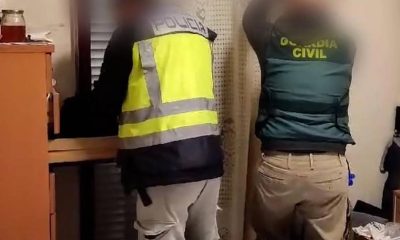
 Costa Blanca2 weeks ago
Costa Blanca2 weeks agoIn Alicante, a criminal group that specialised in robberies at pharmacies and banks has been dismantled
-
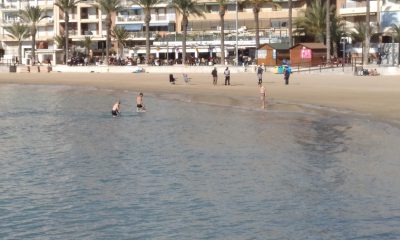
 Costa Blanca2 weeks ago
Costa Blanca2 weeks agoTorrevieja beach bars placed out to tender, but they won’t open until summer
-
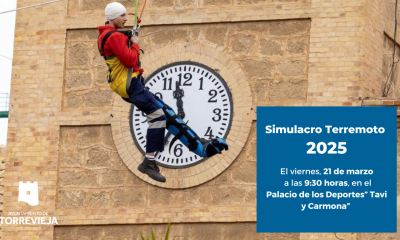
 News2 weeks ago
News2 weeks agoTorrevieja earthquake simulation CANCELLED
-

 Costa Blanca8 hours ago
Costa Blanca8 hours agoBefore Easter, the new road through La Hoya should open
-

 Costa Blanca2 weeks ago
Costa Blanca2 weeks agoElche sets the regulations for riding bicycles and e-scooters
-
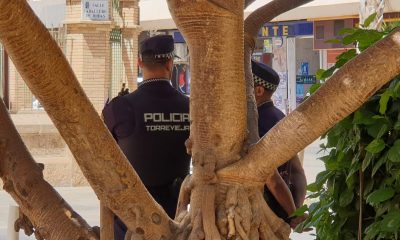
 Costa Blanca2 weeks ago
Costa Blanca2 weeks agoEarthquake drill about to start in Torrevieja
-
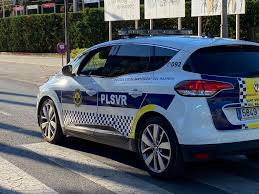
 Costa Blanca2 weeks ago
Costa Blanca2 weeks agoPolice prevent three squatters from taking over an Alicante home
-

 Costa Blanca2 weeks ago
Costa Blanca2 weeks agoElche mother sentenced to 19 years for the murder of her son and the abuse of her twins

